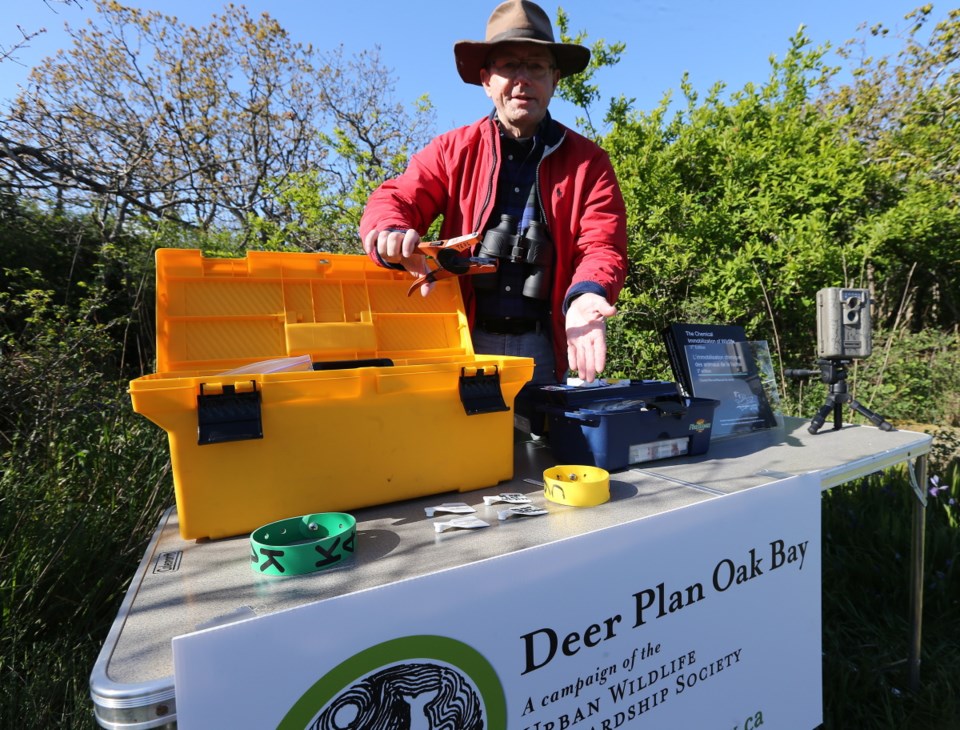An Oak Bay citizens’ group is proposing contraception as an alternative to a cull to control the municipality’s deer population.
With the greenery of Anderson Hill Park as a backdrop, the newly formed Urban Wildlife Stewardship Society unveiled a campaign Tuesday that would involve capturing 25 black-tailed does and injecting then with a vaccine called SpayVac, which acts as a contraceptive by producing antibodies that affect fertilization.
Trapped deer would also be given numbered ear tags to help with monitoring.
“Those numbers allow us to track individual deer and to identify what their movements are,” said society member Rick Page, a professional biologist with experience studying deer. “The other advantage is this allows us to really engage the citizens: They can identify individual deer. They can report to us where they see deer and when.”
Page said the tags will say “Do Not Eat,” since the treatment being used is experimental, although there is no known hazard.
Eleven deer were killed in Oak Bay in February as part of a $250,000 Capital Regional District pilot program for deer management. Oak Bay volunteered to be the first municipality involved.
Federal and provincial permits have yet to be obtained for the contraception campaign, but the aim is to get started in August, Page said.
Society president Bryan Gates, a retired provincial biologist, said members want to offer alternatives to local governments.
“We, as a group, are convinced that culling of — killing of — deer is highly objectionable to many people,” Gates said. “And yet we accept the fact that conflicts do exist and will exist.
“Our goal right now is to administer a humane, effective and non-lethal population-control program for deer, initially in Oak Bay and perhaps to expand to other regions.”
SpayVac has already been used successfully in preventing deer pregnancies on James Island and in Maple Ridge, according to information provided by the society. Page said the move from a cull to a non-lethal program has already been made in a pair of American jurisdictions, one in New Jersey and one in New York.
The society, which has established a website at deerplanoakbay.ca, has raised more than $8,500 for the plan so far and has a fundraising target of $50,000 over the next three months.
“Now we seek public support, public endorsement,” Gates said. “We’re convinced that the general public and everybody will be willing to contribute to this, those who are opposed to the cull particularly.”
Money will also be sought from government sources.
Oak Bay Mayor Nils Jensen said the municipality looked into the prospect of population control when it first devised its deer-management strategy.
“If [a contraception plan] can get up and running, that’s certainly something that we, as a community and council, would no doubt embrace,” he said.
The society believes it has put forward a viable alternative to the cull, said vice-president Kristy Kilpatrick.
“This group coalesced around the belief that there is a better way to co-exist with nature, with wildlife and, in this case, specifically with deer.”
She said the cost of the group’s plan would be similar to the cost of the cull, but it would be more effective in the long term.
The plan calls for deer to be trapped with the same types of devices used in the cull, which consist of a metal frame covered with fish netting.
Once injected and tagged, the animals would be released.



